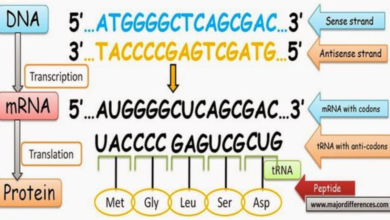Unlocking Interactivity: WebAssembly’s Impact on JavaScript Data Visualization

Data visualization has emerged as the main aspect of web development, providing users with the ability to interpret complex datasets through graphical representations. This is especially true in the United Kingdom, where the tech industry’s rapid growth has led to an increased demand for more sophisticated web applications. At the heart of this evolution is the synergistic relationship between JavaScript and WebAssembly (Wasm), which has significantly enhanced the interactivity and efficiency of data visualization tools. This article explores the impact of WebAssembly on JavaScript data visualization.
Contents
- 1 The Rise of Data Visualization in the UK
- 2 What is WebAssembly?
- 3 Enhancing JavaScript with WebAssembly
- 4 Real-World Applications in the UK
- 5 The Evolution of Web Development Tools
- 6 The Future of Data Visualization with WebAssembly and JavaScript
- 7 Overcoming Challenges
- 8 Opportunities Ahead
- 9 The Road Ahead
The Rise of Data Visualization in the UK
The UK’s tech sector has shown remarkable resilience and growth, even in the face of global economic uncertainties. Central to this resilience is the ability of businesses and developers to present data in accessible and engaging ways. JavaScript, with its vast ecosystem and flexibility, has long been the cornerstone of web-based data visualization. Tools like D3.js, SciChart and Chart.js have enabled developers to create interactive JavaScript charts, graphs, and maps that are both informative and aesthetically pleasing.
However, as datasets become larger and more complex, the limitations of JavaScript’s performance have become increasingly apparent. This is where WebAssembly comes into play, offering a solution that not only complements JavaScript but also enhances its capabilities in handling data-intensive operations.
What is WebAssembly?
WebAssembly is a low-level bytecode format that runs in modern web browsers. It provides a way to run code written in multiple languages on the web at near-native speed, without sacrificing the security or portability of web applications. Essentially, WebAssembly allows for heavy computational tasks to be offloaded from JavaScript, enabling more intensive processing without compromising the user experience.
The introduction of WebAssembly is a milestone in web development, as it bridges the gap between web applications and traditional desktop applications in terms of performance. For data visualization, this means that rendering complex visualizations, processing large datasets, and performing real-time data analysis can now be achieved more efficiently than ever before.
Enhancing JavaScript with WebAssembly
The integration of WebAssembly into the web ecosystem has not replaced JavaScript but rather enhanced its functionality. JavaScript acts as the glue that binds WebAssembly modules to the web, managing DOM interactions and ensuring seamless integration with existing web technologies. This complementary relationship enables developers to leverage the strengths of both languages: the expressive power and flexibility of JavaScript coupled with the performance and efficiency of WebAssembly.
One of the most significant impacts of WebAssembly on JavaScript data visualization is the ability to perform complex calculations and data processing on the client side. This not only reduces the load on servers but also minimizes latency, resulting in smoother and more interactive visualizations. Furthermore, WebAssembly modules can be reused across different projects and applications, promoting code sharing and reducing development time.
Real-World Applications in the UK
The practical applications of combining JavaScript and WebAssembly for data visualization are vast and varied across different industries in the UK. For instance, in the financial sector, real-time stock market dashboards utilize WebAssembly to process large volumes of data quickly, enabling traders to make informed decisions based on the latest market trends. Similarly, in the healthcare sector, interactive visualizations of patient data can help medical professionals identify patterns and diagnose conditions more effectively.
Moreover, the environmental sector benefits from enhanced data visualization capabilities, as researchers can now model complex climate data and predict trends with greater accuracy. These applications not only demonstrate the versatility of WebAssembly but also underscore its potential to drive innovation and improve decision-making processes across various fields.
The Evolution of Web Development Tools
The integration of WebAssembly into the data visualization landscape has also spurred the development of new tools and frameworks that leverage its capabilities. For example, frameworks like Blazor for .NET and Pyodide for Python allow developers to use languages traditionally associated with server-side or desktop application development to create high-performance web applications. This opens up new possibilities for data visualization, enabling the use of advanced algorithms and processing techniques that were previously impractical in a web context.
As we delve further into the impact of WebAssembly on JavaScript data visualization, it’s clear that this technology is not just a temporary trend but a fundamental shift in how we approach web development. Its ability to unlock new levels of performance and interactivity has set a new standard for what is possible in web applications, making it an indispensable tool for developers looking to push the boundaries of data visualization.
The Future of Data Visualization with WebAssembly and JavaScript
The collaboration between WebAssembly and JavaScript is set to redefine the benchmarks for web application performance and interactivity. This is particularly evident in the realm of data visualization, where the demand for real-time, interactive, and complex visualizations is at an all-time high. The integration of WebAssembly enables JavaScript applications to handle heavy data processing and complex computations in the browser, significantly reducing latency and enhancing the user experience. As these technologies mature, we can expect to see an even greater emphasis on interactivity, with visualizations becoming more responsive and capable of handling live data streams with ease.
Overcoming Challenges
While the integration of WebAssembly within JavaScript ecosystems heralds a new era of web development, it is not without its challenges. One of the primary hurdles is the learning curve associated with WebAssembly. For web developers accustomed to JavaScript’s high-level abstractions, delving into the lower-level world of WebAssembly can be daunting. Moreover, debugging WebAssembly modules can be more complex than traditional JavaScript, given its bytecode nature. However, the development community is actively working on tools and resources to simplify these processes, making WebAssembly more accessible to a broader audience of developers.
Another challenge lies in ensuring browser compatibility and performance optimization. Although modern browsers support WebAssembly, discrepancies in performance and implementation details can affect the consistency of user experiences across different platforms. Developers must be vigilant in testing and optimizing their applications to provide a smooth, uniform experience to all users.
Opportunities Ahead
The intersection of WebAssembly and JavaScript opens up a plethora of opportunities for web developers and businesses alike. For developers, WebAssembly offers the chance to experiment with new programming languages and paradigms within the web context, breaking the JavaScript monopoly and fostering a more diverse and innovative development landscape. Businesses, on the other hand, stand to benefit from the enhanced capabilities of web applications, including improved performance, security, and user engagement, which can lead to better outcomes and competitive advantages.
In the UK, where digital innovation is a key driver of economic growth, the adoption of WebAssembly in data visualization projects can further solidify the country’s position as a leader in tech innovation. From enhancing public services through more interactive and informative web applications to driving private sector growth through advanced data analytics and visualization tools, the potential impact is vast.
The Road Ahead
As we look towards the future, it is clear that the collaboration between WebAssembly and JavaScript is just beginning to unfold its full potential. With ongoing improvements to WebAssembly’s capabilities, including the introduction of features like garbage collection and direct access to the DOM, we can anticipate even tighter integration with JavaScript, opening up new possibilities for web application development.
Moreover, the growing community of developers embracing WebAssembly is likely to drive further innovation, sharing knowledge, tools, and best practices that will benefit the entire ecosystem. For data visualization, this means more sophisticated, interactive, and performant visualizations that can handle the growing scale and complexity of data in today’s digital world.
In conclusion, the impact of WebAssembly on JavaScript data visualization represents a significant leap forward in web development. By unlocking new levels of interactivity and performance, this technological synergy is not only enhancing the user experience but also paving the way for future innovations.




